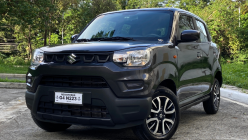Despite the popularity of larger vehicle types in the Philippines, it is pretty clear that the city car segment is still going strong. These cars after all feature some inherent advantages due to their compact size. They’re easier to park, they can easily deal with tight city roads, and their small engines are known to be economical.
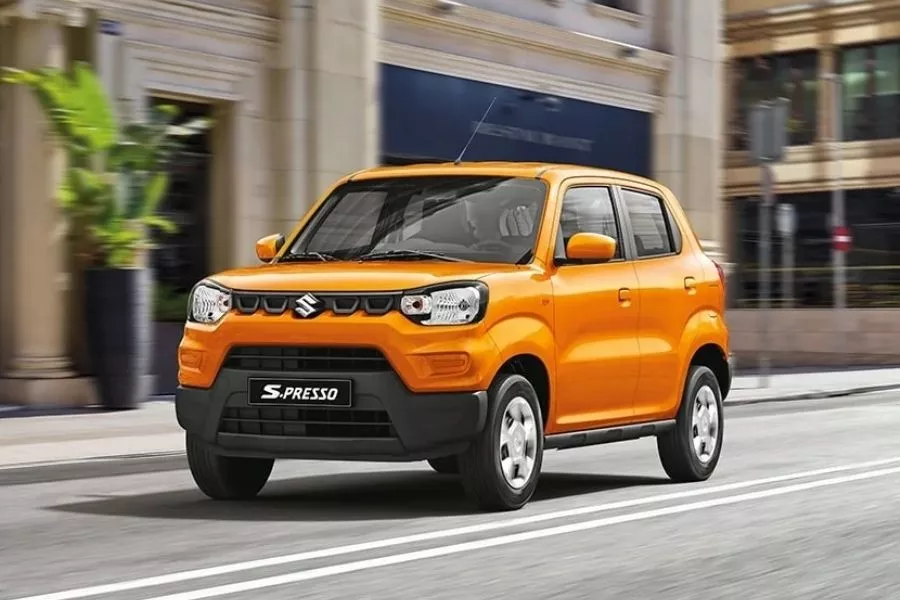
Despite its SUV-like styling, the Suzuki S-Presso is indeed a city car
One brand known for its small cars is Suzuki. And just last year, the marque introduced its smallest, most affordable model: the S-Presso. So how does this Suzuki-made city car fare against the likes of the Honda Brio and the Toyota Wigo? How does it compare spec-wise to its small Suzuki cousins namely the Celerio and the Jimny?
Suzuki S-Presso: Summary of specs
In terms of size, the S-Presso is the smallest city car model that’s currently made and sold by a Japanese marque. To be exact, it just measures 3,565mm long, 1,520mm wide, and 1,565mm in height. Moreover, it comes with a 2,380mm long wheelbase, while having a lot of ground clearance at 180mm.
As for exterior equipment, it comes standard with halogen headlamps, LED taillights, and a set of 14-inch wheels.
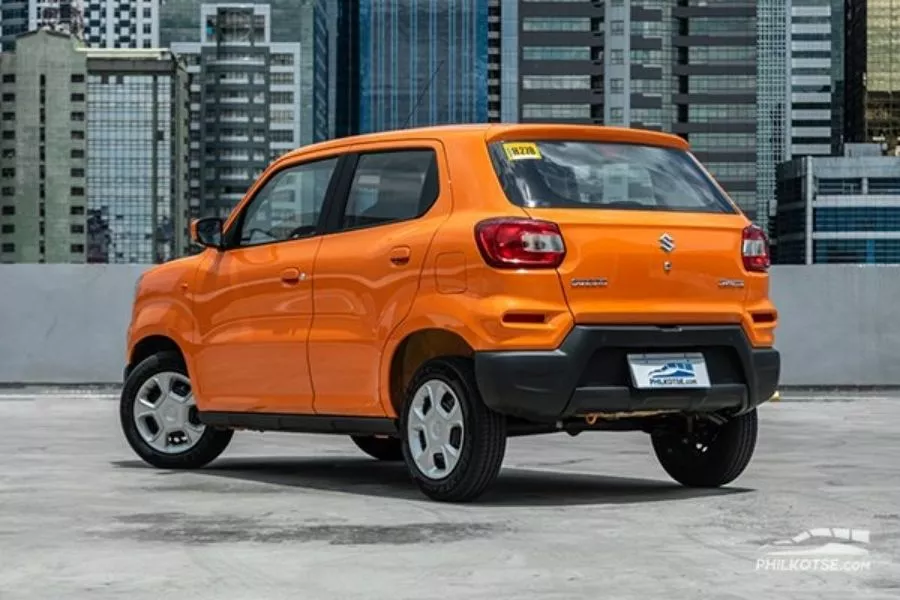
The S-Presso from the rear
Inside, the Suzuki-made city car can accommodate five people. It has fabric-clad seats, and its occupants are kept cool by a manual air-conditioning system. Entertainment is then handled by a seven-inch touchscreen. The said headunit also comes with USB and Bluetooth connectivity. The driver is then provided with a turn-key ignition system, and a tilt-only steering wheel.
Moving over to safety, it comes with what you would expect from a modern vehicle. It has dual-front airbags, anti-lock braking, an engine immobilizer, and ISOFIX child seat tethers.
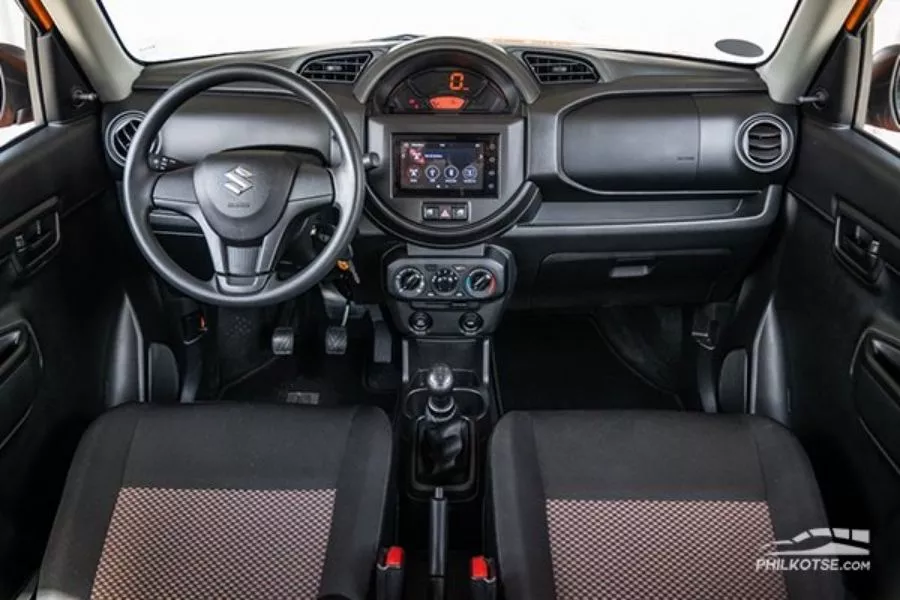
Inside the S-Presso. Check out the gauge cluster's placement
The sole variant of the S-Presso for the Philippine market uses a 1.0-liter inline-3 gasoline engine that can produce up to 67 horsepower and 90 Nm of torque. Power is then sent to the front wheels via a five-speed manual transmission.
Before going over the comparisons though, check out our Suzuki S-Presso review. It provides a more comprehensive look at the said city car model, and it also details our impressions of it when we took it out for a test drive.
Suzuki S-Presso vs Honda Brio
While still a city car, the Honda Brio is a bit larger than the Suzuki model. It has a length of 3,800mm, a width of 1,680mm, and a height of 1,485mm. Of note, the Brio RS variant is 15mm longer than the other variants due to its body kits. Moreover, the Brio’s 2,405mm wheelbase is also longer than the S-Presso, although it has significantly less ground clearance at 137mm.
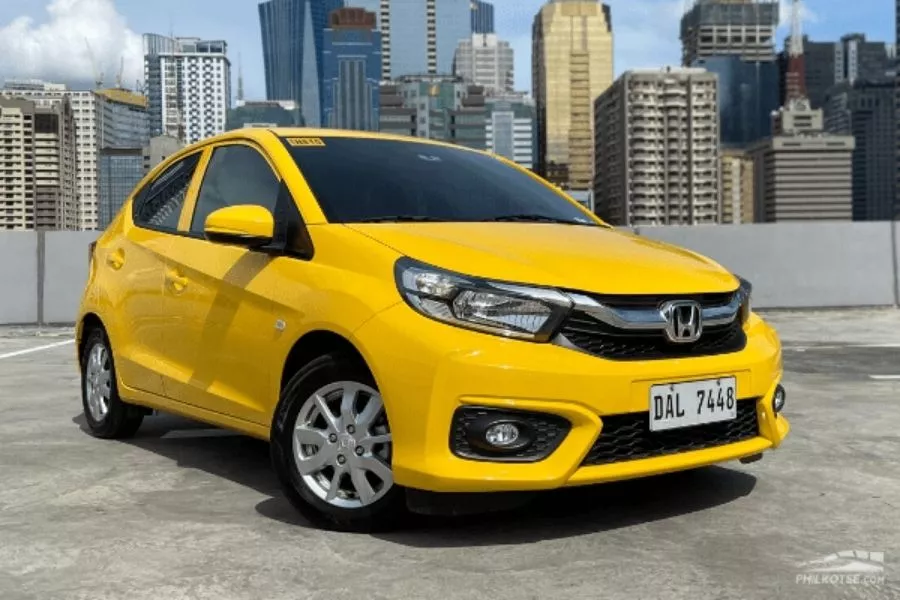
The Honda Brio V
On the outside, the entry-level Brio variant also comes with halogen headlamps. Its taillights however are halogens. The top-spec RS variant does have front fog lamps and a rear spoiler which the Suzuki model lacks.
Like the S-Presso, the Brio can seat up to five occupants, albeit its higher-spec comes with a parking camera. Like the S-Presso, the Brio also has a seven-inch headunit with Bluetooth and USB connectivity. It also has a turn-key ignition system, a tilt-only steering wheel, fabric seats, and a manual air-conditioning system.
If we weighed up the Suzuki S-Presso vs the Honda Brio in terms of safety, they’re also pretty much identical. Both cars come standard with anti-lock braking, dual-front airbags, an engine immobilizer, and ISOFIX child seat tethers. The top-spec Brio RS, on the other hand, comes with the addition of speed-sensing door locks, and a car alarm.

The Brio's well-arranged cockpit
As for power, the Brio’s 1.5-liter inline-4 gasoline mill beats the S-Presso in terms of output. This is because it makes up to 89 horsepower and 110 Nm of torque. It also contrasts the manual-only Suzuki model in that it can either come with a five-speed manual gearbox, or continuously variable transmission (CVT).
Pricing for the Philippine-spec Honda Brio ranges from Php 601,000 to Php 735,000.
Suzuki S-Presso vs Toyota Wigo
Another city car rival for the Suzuki S-Presso is the Toyota Wigo. In terms of size, the Toyota is marginally longer with its length of 3,660mm and it is also wider at 1,600mm. Its wheelbase is also longer at 2,450mm, and it has the same amount of ground clearance at 180mm. The Wigo is shorter with a height of 1,520mm.
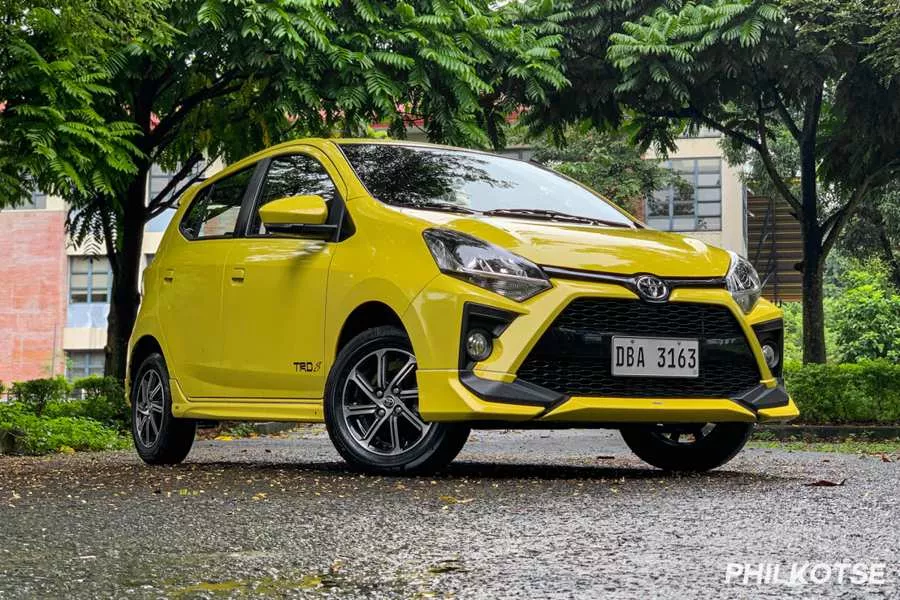
The Wigo TRD S top-spec variant
If we compare the Suzuki S-Presso vs the Toyota Wigo when it comes to exterior amenities, they’re more or less on par with each other. To be specific, both models are equipped with halogen headlamps, LED taillights, and 14-inch wheels. But do note that the higher-spec Wigo G and Wigo TRD S have front fog lamps while the S-Presso does not.
Inside, the Wigo can also seat up to five. And like the Suzuki, it also features fabric seats, a tilt-only steering wheel, and manual conditioning. As with the exterior bits, the higher-spec Wigo trims have more features than the S-Presso. Chief among these is a push-to-start button, as well as Apple CarPlay and Android Auto for the touchscreen headunit (Wigo TRD S).
Regarding safety, the Wigo is fitted with a similar kit as the S-Presso and Honda Brio. It also has two front airbags, anti-lock braking, ISOFIX child seat tethers, and an engine immobilizer. But besides those, the Wigo G and TRD S also come with a security alarm which is absent on the Suzuki model.
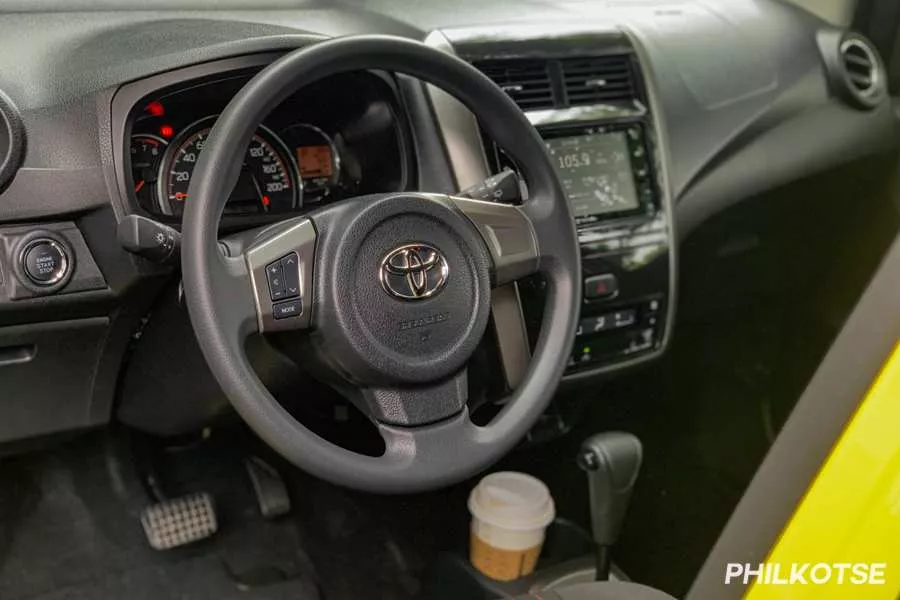
The Wigo TRD S also has steering wheel mounted controls
Propelling the Wigo is a 1.0-liter inline-3 engine. Now this mill is just as powerful as the one on the S-Presso as it can produce up to 66 horsepower and 89 Nm of torque. The Wigo is also a front-wheel-drive model, though it can either come with a five-speed manual transmission or a four-speed automatic transmission.
Prices for the Toyota Wigo start at Php 568,000 and range to Php 700,000.
Suzuki S-Presso vs Suzuki Celerio
Being a small car specialist, it is unsurprising that Suzuki has two city car models in its local lineup. Other than the S-Presso, it also carries the slightly larger but less tall Celerio. To be specific, it measures 3,600mm in length, is 1,600mm wide, and 1,540mm in height. It also has a longer wheelbase at 2,425mm but it has less in the way of ground clearance at 145mm.
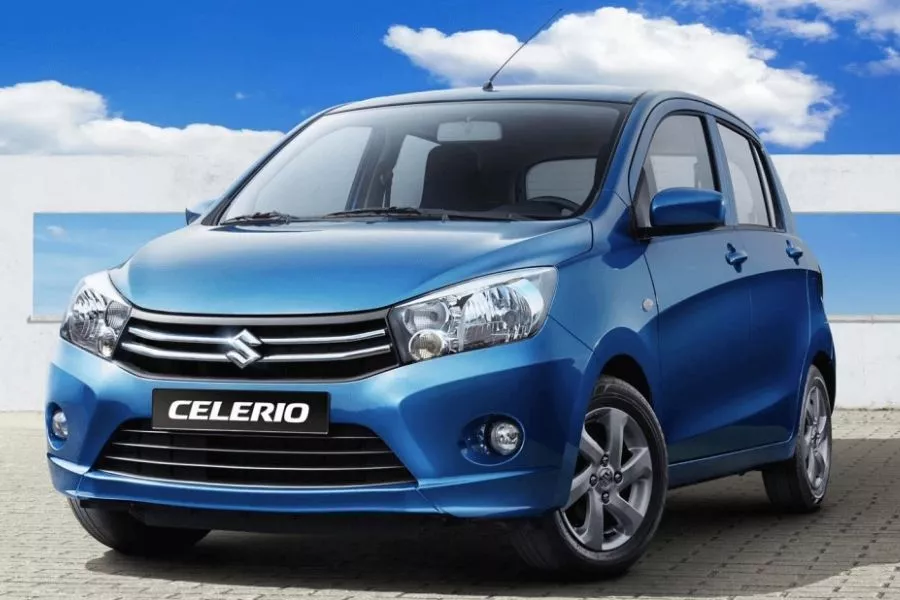
The Celerio isn't as boxy than the S-Presso
In comparing the Suzuki S-Presso vs the Suzuki Celerio when it comes to exterior, they’re pretty similar. Both come standard with halogen headlamps, LED taillights, and 14-inch wheels. The only difference is that the Celerio also comes standard with front fog lamps.
Inside, the Celerio is also specced similarly to its smaller sibling. It can likewise seat five, it also has manual air-conditioning, and it also has fabric seats. Moreover, it provides its driver with a turn-key ignition system, and a tilt-only steering wheel. While similarly sized and packaged with the same connectivity options, the seven-inch headunit on the Celerio does come with offline navigation.
Safety-wise, the Celerio is equipped with two front airbags, an engine immobilizer, anti-lock braking, and ISOFIX child seat tethers. Yep, just like the S-Presso.
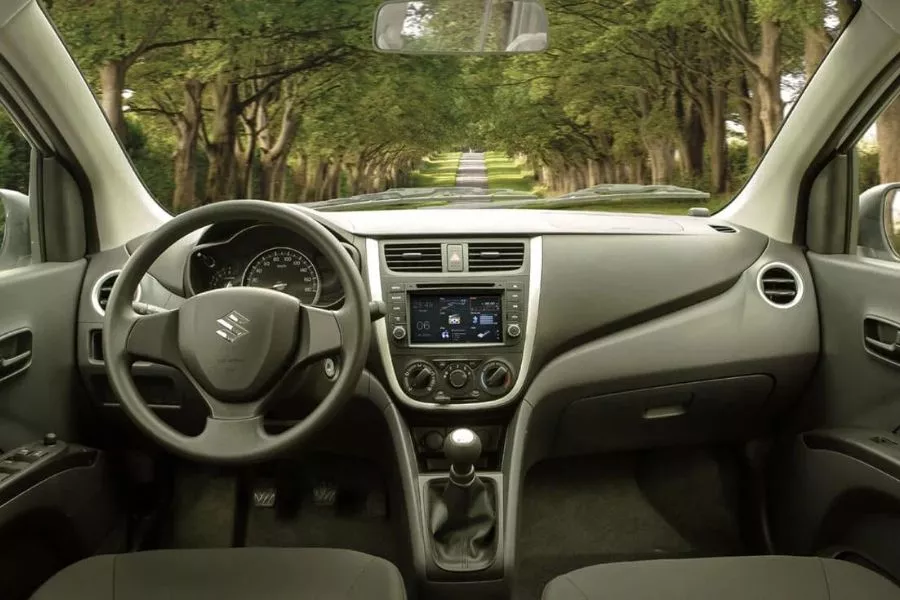
The Celerio's front cabin
Lastly, the Celerio uses the same 1.0-liter inline-3 engine that’s available to the S-Presso. It also has the same maximum output of 67 horsepower and 90 Nm of torque. The Celerio is likewise, a front-wheel-drive vehicle but unlike the manual-only S-Presso, it can either come with a five-speed manual transmission or a CVT.
Suzuki S-Presso vs Suzuki Jimny
Before going on to compare the S-Presso against the Jimny in terms of specs, be aware that the latter isn’t a city car. Sure it’s tiny, but it is actually a full-on SUV. That said though, the Jimny has a length of 3,480mm, a width of 1,645mm, and a height of 1,725mm. Save for the height, it isn’t that much larger than the S-Presso. As such, one or two people might mistake it for a city car.
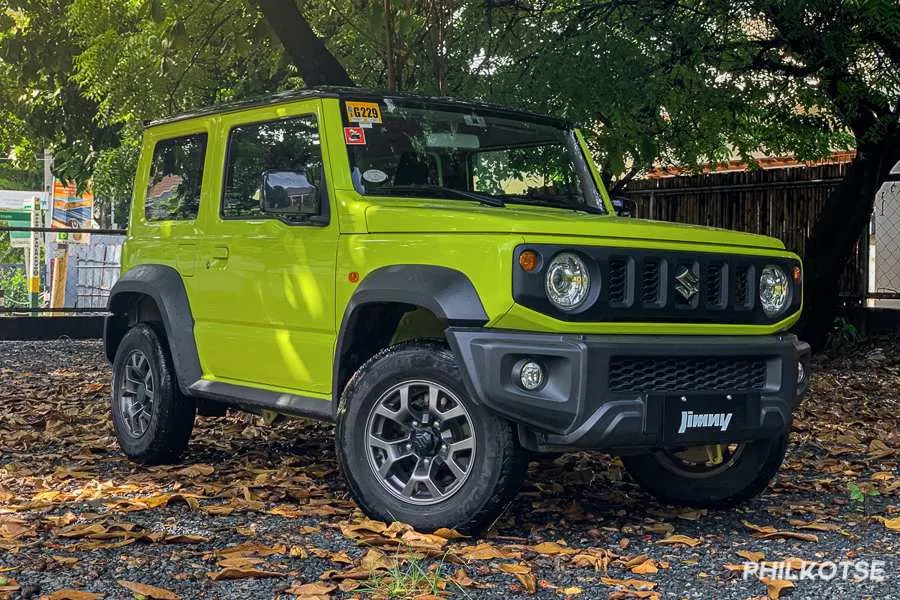
The retro-modern and deliciously boxy Suzuki Jimny
Despite its small size, the Jimny offers a whole lot more features than its more affordable S-Presso cousin. For one thing, it has roof rails, front fog lamps, and beefier stock tires. The top-spec GLX even gets LED headlamps.
Surprisingly enough, the Jimny provides even less space than the S-Presso. This is despite the fact that it is actually a bit wider than the S-Presso. At best, it can seat up to four, and filling it up to capacity eliminates any usable trunk space.
Then again, the Jimny has a more comprehensive list of onboard features. These include a clinometer with an altimeter, mirror link software for its nine-inch touchscreen, Bluetooth and USB connectivity, and offline navigation. The top-spec model even has more with its automatic climate control system, and cruise control.
As for safety, the Suzuki-made SUV also has more to it than the S-Presso. It has anti-lock braking, dual-front airbags, hill-hold control, hill-hold control, stability control, ISOFIX child seat tethers, and an engine immobilizer.
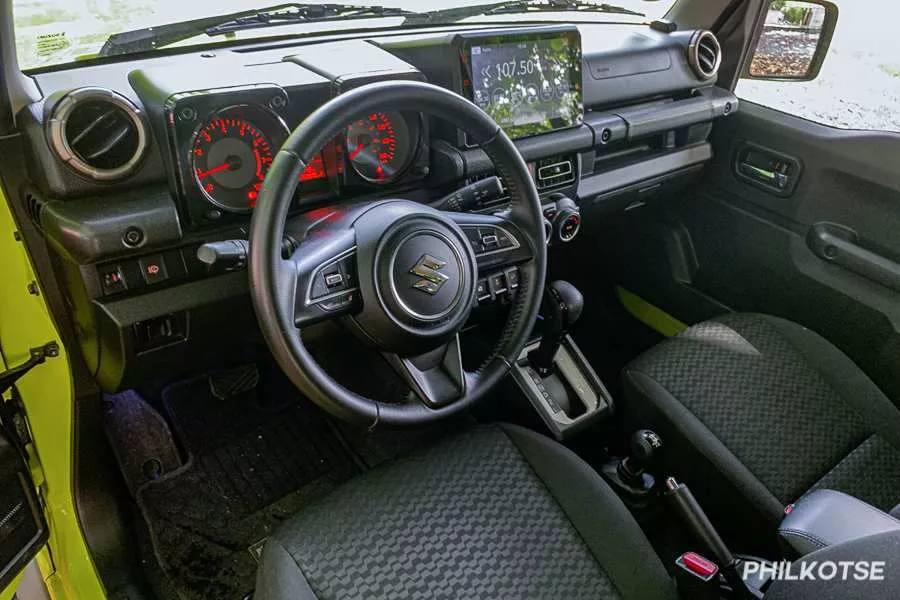
Even it's interior is geared towards durability and toughness
As for engines, the Jimny uses a 1.5-liter inline-4 engine that’s more powerful than the S-Presso's three-banger unit. At most, this engine can make up to 101 horsepower and 130 Nm of torque. Power is sent to all four wheels through a part-time 4x4 drivetrain. The Jimny is also available with a four-speed automatic transmission, or five-speed manual transmission.
And in being an SUV, the Jimny uses a body-on-frame chassis. A platform that is way stronger than any of the unibody chassis that all city car models use. On top of that, the Suzuki-made SUV also has a limited-slip differential. Combined with the 210mm of ground clearance, it makes for a highly capable off-road machine. Something that the S-Presso or any of the city cars on this list aren’t designed to do.
Price-wise, the Suzuki Jimny ranges from Php 1,095,000 to Php 1,215,000.
For more car buying and selling guides, as well as car maintenance guides, keep it here on Philkotse.com.
Know more about Suzuki S-Presso 2026

The Suzuki S-Presso 2025 is a five-seater city car. In the Philippines, it has two available trims. These are the S-Presso GL 1.0 MT and the GL 1.0 AGS. The GL MT is priced at Php 634,000, while the AGS version retails at 674,000.
Size-wise, the S-Presso 2025 has a length of 3,565mm, a width of 1,529mm, and a height of 1,565mm. It also has a ground clearance of 180mm.
Locally, the S-Presso competes against the likes of the Toyota Wigo, Mitsubishi Mirage hatchback, Honda Brio, among others.
>>> New and used Suzuki S-Presso 2025 for sale in the Philippines
Toyota Wigo TRD-S vs Suzuki S-Presso AGS | Philkotse Spec Check
Suzuki S-Presso Launch
The model was introduced to Indian customers in 2019, eventually making its way to the Philippines in 2020. It replaced the Alto K10 in Suzuki’s Indian lineup as well as the Alto 800 in the carmaker’s Philippine offerings. In the Philippine release, the vehicle is available in two variants, with the option of 14-inch alloy wheels for the base model.
This is the second Suzuki Auto model named after a type of coffee, following the Suzuki Cappuccino two-seater convertible which was in production from 1991 to 1998.
Later in 2023, Suzuki Philippines updated the S-Presso. The brand likewise introduced the automatic gear-shift (AGS) model.
Suzuki S-Presso Exterior
Coming in at 3,565mm long, 1,529mm wide, and 1,565mm high, the Philippine-release Suzuki S-Presso sports a hatchback form factor, with small dimensions offset by various SUV styling cues such as prominent fenders, a high beltline, and a tall ground clearance of 180mm. The slim black grille with trapezoidal elements (chrome for top-spec SE) is surrounded by multi-reflector halogen headlamps, with cutout panels for aftermarket fog lamps below. A black resin bumper houses the front air dam and a lower lip styled as a skid plate.
At the rear, C-shaped rear combination lamps are also located high up on the body, pushed to the corners flanking the tailgate, resting above the black resin rear bumper. The S-Presso rides on a set of 14-inch steel wheels with full wheel covers for the non-SE variant, while the rest get 14-inch alloy wheels.
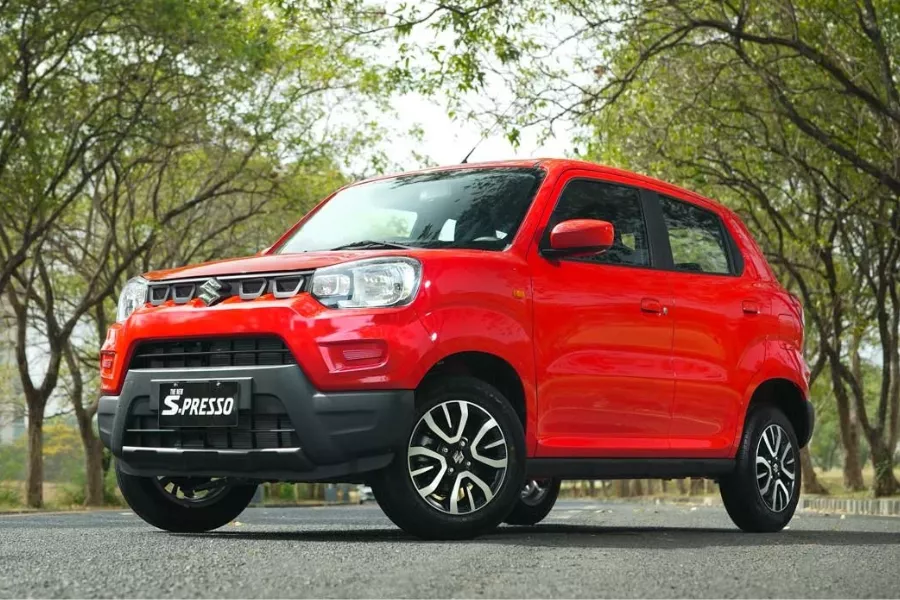
Suzuki S-Presso Interior
For the interior, the S-Presso sold in the Philippines comes in a predominantly black interior color palette. A single front-mounted cabin light provides illumination. There’s room for up to five occupants, with front seat featuring integrated headrests while the rear bench uses removable head restraints. The vinyl and fabric seats have a high hip point which provides occupants with an elevated seating position. There’s room for up to 239 liters of cargo, expandable by folding the rear seats.
Front power windows are standard equipment, with switches mounted on the dashboard. A digital instrument panel with amber backlighting is located at the center of the dashboard. There’s a front storage pocket between the front seats, as well as bottle holders on the center console and door pockets.
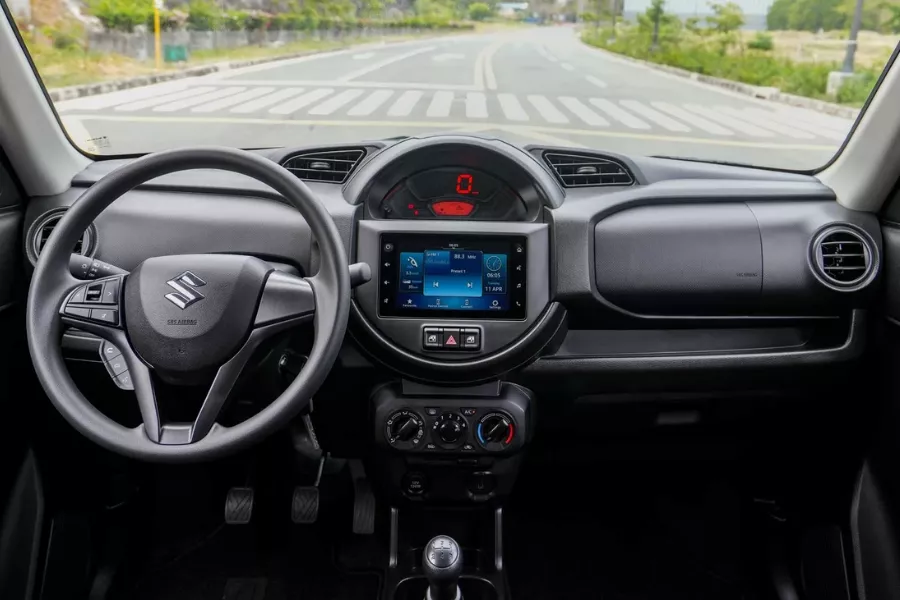
Suzuki S-Presso Colors
In the Philippines, there are 4 available Suzuki S-Presso colors. The 2025 Suzuki S-Presso can come in orange (Sizzle Orange), and there’s also a Suzuki S-Presso in silver (Metallic Silky Silver). Furthermore, one can also get the Suzuki S-Presso in a darker shade of gray (Metallic Granite Grey). And lastly, the Suzuki S-Presso can also be had in red (Fire Red).
Meanwhile, the top-of-the-line Suzuki S-Presso SE is available in Starry Blue Pearl, which creates a distinction from the non-SE variants.
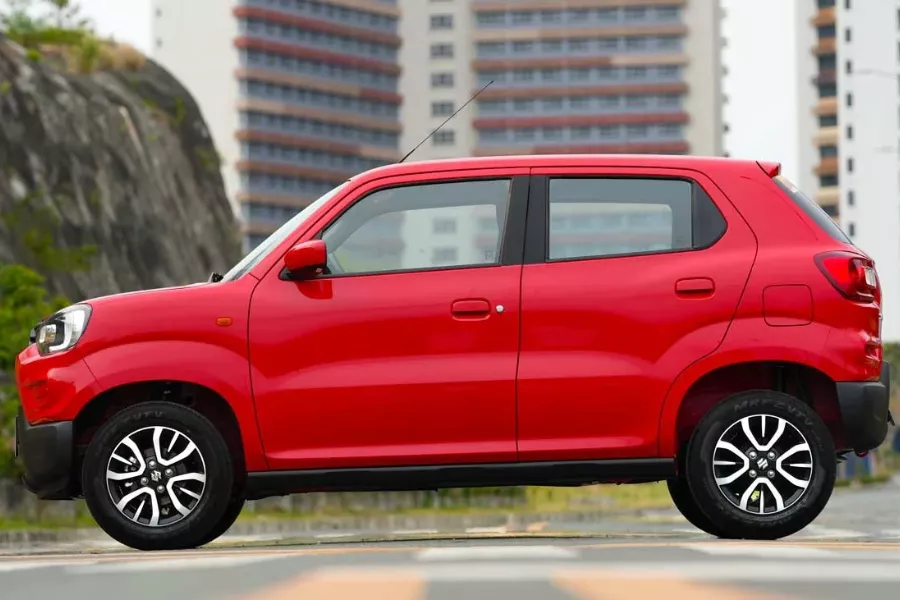
Technology & Safety
The Philippine-spec S-Presso comes equipped with a 7-inch touchscreen head unit that has an AM/FM radio tuner, USB and Bluetooth connectivity, as well as video, music, and photo playback. Manual air-conditioning controls with rotary switches are located below the display.
For safety, the Suzuki S-Presso Philippines offers anti-lock brakes with electronic brakeforce distribution, dual front airbags, four 3-point ELR seatbelts with one 2-point lap belt, and ISOFIX child seat anchor points. Childproof rear door locks and rear parking sensors are also included, as well as seatbelt reminders for the front occupants.
In crash tests conducted by Global NCAP, the S-Presso scored zero stars out of five for the base variant without seatbelt pre-tensioners, front passenger airbags, and ISOFIX anchors, features that are omitted on the Indian-spec base trim.
The 2025 AGS variant then gets hill-hold control.
Platform & Chassis
The Philippine-spec S-Presso is built around the fifth-generation HEARTECT K platform, which Suzuki Philippines claims uses advanced and ultra-high tensile steel. Better ride quality and handling are achieved through increased rigidity, while the chassis reduces the vehicle’s weight by up to 30 kg. The platform has been in use since 2014 on the Suzuki Alto and currently underpins a range of other Suzuki models such as the Swift, DZire, Ertiga, and XL7.
Suzuki designed the frame of the S-Presso to center around the Total Effective Control Technology (TECT) concept, resulting in a structure that can absorb and disperse crash energy in the event of a collision. Electric power steering combined with the vehicle’s small dimensions allows it a minimum turning radius of 4.5m. Front MacPherson strut and rear torsion beam suspension are standard.
Engine & Drivetrain
The Suzuki S-Presso sold in the Philippines runs on a 1.0-liter K10B 3-cylinder gasoline engine that produces 67 hp and up to 90 Nm of torque. This is mated to a 5-speed manual transmission or 5-speed auto-gear shift gearbox that routes power to the front wheels.
Available colors for the Suzuki S-Presso 2025 in the Philippines include Sizzle Orange, Fire Red, Metallic Granite Gray, Metallic Silky Silver, and Pearl Starry Blue (exclusive to the Special Edition).
The Suzuki S-Presso 2025's main advantage is in terms of price compared to its rivals, as it is currently the most affordable car that can be bought brand-new in the market. It matches the Toyota Wigo in terms of ground clearance but is generally smaller in most respects than other contenders in the segment. Owing to its price tag, the S-Presso had to do away with certain interior amenities such as power windows on the rear doors, although it still manages to come with a touchscreen head unit that has Bluetooth connectivity. However, it is only available in a 5-speed manual transmission.
Suzuki S-Presso 2025 Price List
Let's check out the Suzuki S-Presso 2025 price in January in the Philippines.
| Variants | Price |
|---|---|
| Suzuki S-Presso GL MT | ₱634,000 |
| Suzuki S-Presso GL AGS | ₱674,000 |
Suzuki S-Presso Pros & Cons
Pros
- Affordable
- SUV styling
- Roomy cabin
-
Outstanding fuel economy
Cons
- Subpar insulation against noise and vibration
- No Apple CarPlay/Android Auto
- No tachometer for gear shifts
- Available only with a manual transmission
Suzuki S-Presso FAQs
1. What are the dimensions of Suzuki S-Presso?
The overall dimension of the Suzuki S-Presso is 3,565 mm length x 1,520 mm width x 1,565 mm height.
2. Is the Suzuki S-Presso automatic or manual?
The Philippine-spec Suzuki S-Presso is only offered with manual transmission.
3. How much is Suzuki S-Presso 2024 in the Philippines?
The price of the new S-Presso in the Philippines ranges from 620,000 Php for the GL to 660,000 for the AGS.
4. How many color options does the Suzuki S-Presso have?
Locally, Suzuki S-Presso has 4 available colors: Metallic Silky Silver, Sizzle Orange, Metallic Granite Grey, and Fire Red.
5. Is the Suzuki S-Presso a hatchback?
Yes, it is.
₱ 620,000 - ₱ 660,000
ExploreRecent posts
- Latest Suzuki S-Presso Price Philippines 2026 Sep 23, 2025
- Latest Suzuki Celerio Price Philippines 2026 Sep 23, 2025
- Latest Honda Brio Price Philippines 2026 Sep 23, 2025
- Why 2020 Suzuki S-Presso is more of a lifted Celerio Apr 08, 2021





